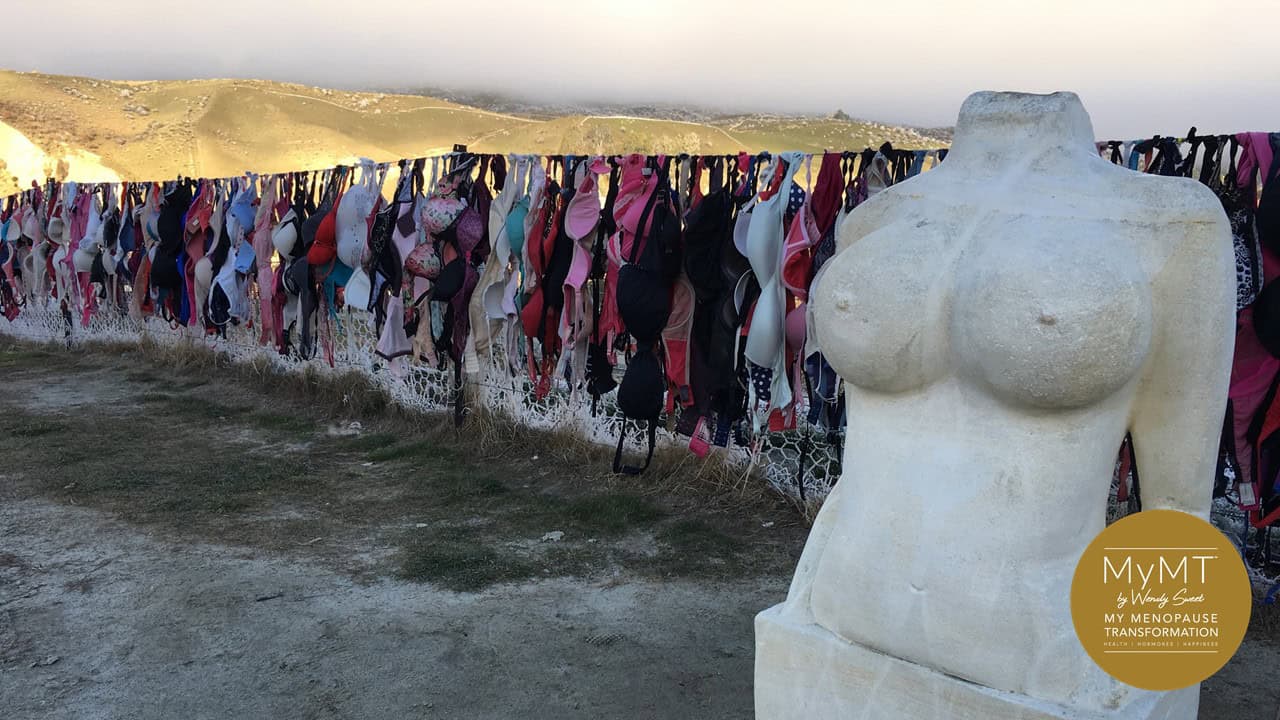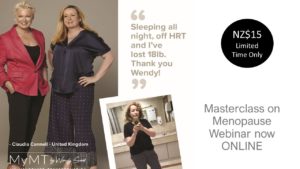“I have to wear three bras to go for a run – my breasts have got so big and sore!” she cried as she left a message on my phone. “They’ve never been this big in my life and I hate how it’s uncomfortable to run. It’s really impacting on training my clients.”
How this bought back memories for me. When my own breast size doubled as I reached my late 40s and early 50s, I was mystified. Nobody had told me about the effect of changing hormones on my breast tissue. “Welcome to peri-menopause” I said, “and here is an article for you.” I sent her this one. If you are mystified about your increasing breast size (especially if you are in peri-menopause), then have a read when you can. You might just have your ‘aha’ lightbulb moment as my friend did too.
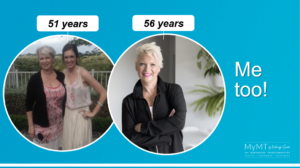
There are many tourists to the Cardrona Valley in the South Island of New Zealand who might recognise this ‘bra fence’ in the image above. As I drove along the valley this week, there were numerous younger women taking off their bra’s and hanging them up. Exclamations of glee and laughter could be heard as I paused to take this photo for you. At that younger age, I never gave my boobs a thought. But that all changed as I approached menopause. They became tight, sore and swollen. I spent hundreds of dollars on new bra’s and exercised and ate well, but still my breast size increased and so did the pain.
I didn’t fully understand that our breast tissue is full of oestrogen receptors as well as lymphatic vessels. This means that as we move into menopause, the lymphatic vessels are losing elasitcity and the oestrogen receptors and fat tissue get a bit confused with all the hormonal changes occuring with our reproductive hormones. The combination of changing lymphatic vessels and the receptiveness of breast tissue for excess oestrogen can contribute to swelling, pain and a condition, which some of you have heard me talk about before, called ‘oestrogen dominance.’
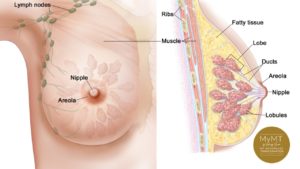 Breast tissue is known to have local oestrogen production and storage. Because of this, our breast tissue is responsive to the storage of xeno-oestrogens – this is the term given to environmental oestrogens that get into our body as well as oestrogens in hormonal medications such as HRT or contraceptive medications. When fat cells (including breast tissue cells which have high numbers of oestrogen receptors) store excess oestrogens, this may lead to women becoming oestrogen dominant with breasts that are swollen and sore. For those who are on breast cancer treatments as Lyndie was, this is an important point to note.
Breast tissue is known to have local oestrogen production and storage. Because of this, our breast tissue is responsive to the storage of xeno-oestrogens – this is the term given to environmental oestrogens that get into our body as well as oestrogens in hormonal medications such as HRT or contraceptive medications. When fat cells (including breast tissue cells which have high numbers of oestrogen receptors) store excess oestrogens, this may lead to women becoming oestrogen dominant with breasts that are swollen and sore. For those who are on breast cancer treatments as Lyndie was, this is an important point to note.
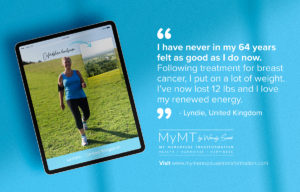
What is Oestrogen Dominance?
As far back as the 1970’s, Dr John Lee, a medical Doctor from California, was inspired to explore the role of progesterone in peri-menopause after noticing that many of his female patients were intolerant to the use of oestrogen replacement therapy [HRT].
Like a few other doctors and endocrinologists at this time, Dr Lee believed that the distressing symptoms that so many women experienced during menopause were in fact NOT due to the low oestrogen levels, which is a natural occuence during menopause, but in fact, due to higher than normal amounts of oestrogen present in the body fat tissues.
He realised that women with a pre-disposition to put on weight, had higher levels of oestrogen circulating in their blood stream and with new research into obesity, he knew that fat cells are a receptor or storage area for oestrogen too. This includes breast tissue. Because oestrogen, like other hormones, works in harmony with an opposing hormone, Dr Lee, began to explore the role of oestrogen’s opposing hormone, called progesterone.
Extra oestrogen stored in fat cells and liver cells can play havoc on progesterone levels, causing them to drop dramatically. This imbalance naturally causes oestrogen to dominate the hormonal environment, over-shadowing progesterone. What this then does, is to exacerbate the symptoms of low progesterone as the oestrogen is ‘unopposed’. Hence, Dr Lee, coined a term to describe this phenomenon as ‘Oestrogen Dominance’.
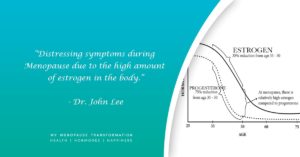
What happens when you are oestrogen dominant?
| Oestrogen dominance means that progesterone may be abnormally low. |
Perhaps the most important consideration of oestrogen dominance during menopause, is that this environment impairs the functioning of cell membranes. If you feel that your breasts are tight and swollen and you’ve gone up a bra size or two as I did, then please read on. It’s what I needed to know when it happened to me!
When our cell membranes don’t work very well with the change in oestrogen storage and therefore, lower progesterone, then sodium is retained in cells. When sodium is retained, so is water.
The ‘puffiness’, bloating and swelling you are experiencing is also water retention and it’s not good for those women already at risk of high blood pressure. Other symptoms of oestrogen dominance also start to be felt – sore and tender breasts, mood disturbances, low motivation, irritability and of course, weight gain, especially around the middle.
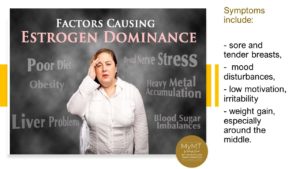
Why does my blood pressure go higher if I am Oestrogen Dominant?
Did you know that all of the hormones in the body work in harmony to stabilise the normal internal environment of the body? In technical terms this is called homeostasis – the term to describe how the hormones work together to maintain normal function. Hence, when both sex hormones, oestrogen and progesterone. are changing, then they exert influence on other areas of the body too. As such, these hormones influence our blood vessels and regulation of our plasma volume too.
When you are oestrogen dominant, your plasma volume is increased. This leads to a complex array of other hormonal changes which influences the hormonal system that has evolved to control thirst, fluid intake, sodium appetite and renal fluid regulation. It’s why you might crave salt or sugar, feel bloated, puffy and your breasts are sore and tight. This happened to Dianne as well.

Sodium retention in cells causes an imbalance of fluid movement in and out of cells. This combined with increased plasma volume, combine to influence an increase in your blood pressure. If you are also not sleeping, putting on weight or feeling stressed or anxious then you increase your risk of high blood pressure (hypertension) further. It’s why I’m always telling women to get their blood pressure checked regularly throughout menopause and if there is a family history of heart disease, then it is imperative that you manage your oestrogen dominance during your menopause transition. There is plenty of medical evidence available to remind us that post-menopause heart disease is one of the most frequent clinical conditions in women as they get older. It’s why I always say in my Masterclass on Menopause (now online for you HERE), ‘Menopause isn’t ‘just’ about hot flushes’!
Why do I need to do something about Oestrogen Dominance?
Oestrogen dominance and increasing weight gain, left untreated during menopause can cause a host of other health problems in your post-menopause years. This includes:
- Increased release of histamine (do you sneeze a lot to certain triggers including wine?)
- Increase in breast fibrocysts and a history of endometriosis
- Obesity related health problems, including metabolic syndrome
- Low thyroid function (hypo-thyroidism)
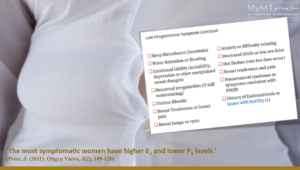
My 3 top strategies to turn around your Oestrogen Dominance:
- Reduce animal foods in your diet. Many of these are high in oestrogen. It’s not forever, but changing your diet to mainly plant-based helps to ‘break the circuit’ of your oestrogen dominance.
- Restore liver health. I have a big focus on liver health and metabolism in my 12 week Transform Me weight loss programme (currently on sale for you during lockdown). The reason for this, is because the liver is the main organ which helps to clear excess oestrogenic compounds.
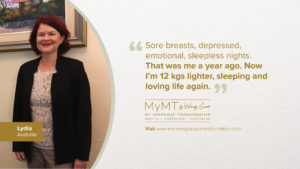
3. Improve lymphatic drainage. Your lymphatic system is an important toxin-removal system and a healthy lymphatic system means that you move fluid in and out of cells more easily and you help your blood pressure too. This is why stretching, breathing and some physical activity is important for you in menopause – swimming is my activity of choice when it comes to lymphatic exercise.
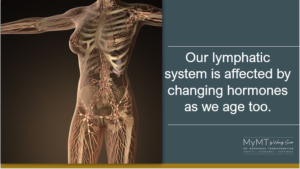
Earlier this year before we went into lockdown, I made this little video about the SCIENCE of your MENOPAUSE WEIGHT LOSS – when you get time, have a listen when you can. It’s around 6 minutes long.
And don’t forget that if you are interested in joining me at the moment, then because I know times are tough out there, if you have been interested in coming on board, there is NZ$50 off the cost of my programmes. This makes them NZ$249 instead of $299 and you just use the promo code ATHOME21 to access these savings. There are 3 monthly payments if you would like that option as well. If you go to this LINK, then you can read all about the MyMT™ Transform Me weight loss programme . I’ve developed this powerful programme from my doctoral studies on women’s healthy ageing.
Stay well where-ever you are in the world.
Wendy Sweet,(PhD)/ MyMT Founder/ Member:Australasian Society of Lifestyle Medicine
